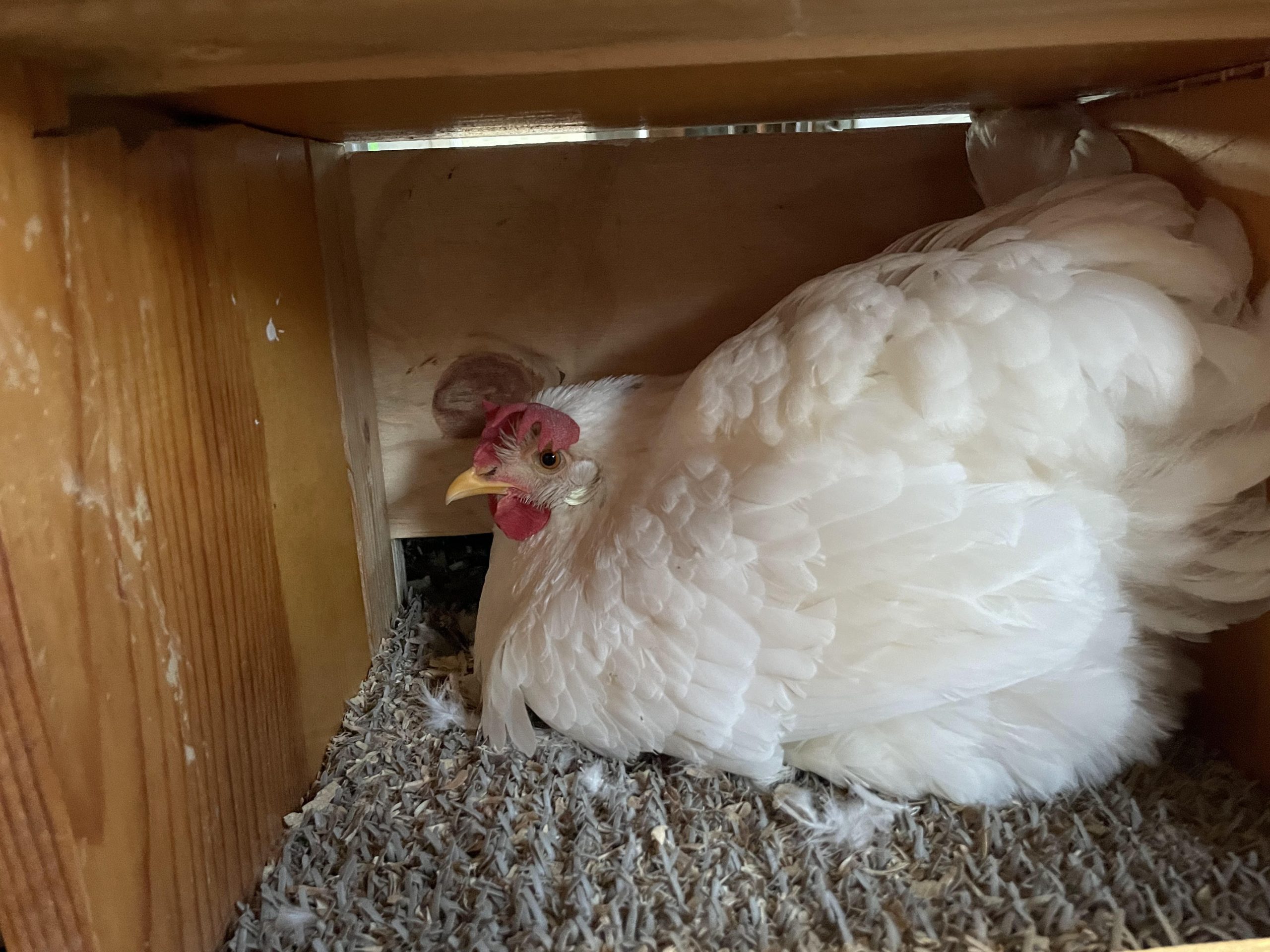Justin Bieber’s song, NEVER SAY NEVER, applies to chickens. How can that be?
Rich and Marion Patterson learned “how” with their new flock. When preparing their chick order in early spring they selected half their chicks to be from well-known, dual-purpose production breeds. So, they included Barred Rocks, Rhode Island Reds, and Delawares in the order along with one California White, a famous laying dynamo. All are breeds unlikely to pause laying and go broody. The other half of the flock was from fun breeds like Brahmas and Cochins. They’re gorgeous modest layers that have a tendency to go broody.
Their flock’s first eggs came as the weather cooled in September. Mixed in with brown eggs was a daily white one laid by their sole California White. Then something odd happened. That supposedly non broody hen went broody!

Hens are less likely to go broody as days shorten in the fall and nights cool. Broodiness is more likely in late winter and spring. Patterson’s California White had different thoughts. She went broody in the fall while her broody prone flock mates kept laying.
Why?
The answer is simple and is important to understand when purchasing a flock of baby chicks. Chickens, like all living things, are individuals. No matter how much intensive breeding is devoted to developing traits, like high egg production, disease resistance, avoiding broodiness, once in a while a chicken is different from her sisters. She beats to a different drummer.
Although the Patterson’s California White is a hybrid that rarely goes broody, the word “rarely” is important. Once in a while an individual varies from the norm for the breed. Because of that the folks at Hoover’s Hatchery are careful to avoid using definite words to describe a breed’s characteristics. They don’t use words like never or always to describe characteristics. Instead, their descriptions use words that allow for individual differences like usually, seldom, occasionally or tend to when describing a breed.
Sometimes they make individual differences clear. For example, when describing the egg color of Olive Eggers the Hoover’s catalog states that the greenish color isn’t perfect. 5% of the birds may lay brown eggs.
Anyone ordering a batch of chicks should keep individual variation in mind. Want the most eggs? Order famous hybrids like ISA Browns or California Whites, but don’t be perplexed if an occasional one lays very few eggs or goes broody. The flock, in total, will lay plenty of eggs. Want broody hens? Order from breeds that are likely to be broody, but in that flock a few individuals will decide to opt out of motherhood and keep laying.
Individual variations within a small chicken flock are fascinating. It’s part of the fun of keeping them.